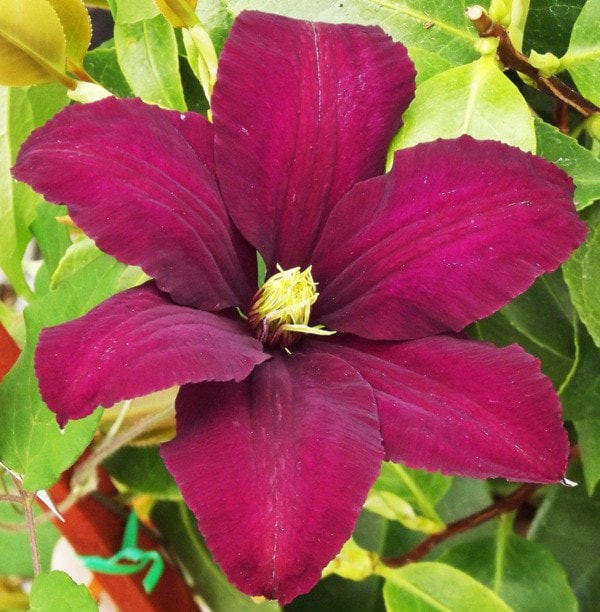Few things in gardening are as controversial as to how to properly pronounce clematis, and trying to convince some people that both versions are perfectly acceptable is a lot like flogging a dead parrot.
In my experience, the instigators are almost always persons of British descent, so I have developed a personal defense mechanism using a little bit of their own culture, specifically Monty Python’s Flying Circus. So the next time you correct my kle-MAT-tis and see me grinning your way, please keep in mind that I’m envisioning you with John Cleese’s head and a dead parrot in hand, throwing a big fit, just consider it my quirky way of coping with your grammatical insolence.
Now that I’ve got that off my chest, let’s talk about how to grow the world’s most popular flowering vine.
Clematis has been a garden favourite for centuries now and many of the best-selling cultivars today are well over a hundred years old, including ‘Nelly Moser’ (1897), ‘Ville de Lyon’ (1899), ‘Duchess of Edinburgh’ (1874), ‘Star of India’ (1871) and the venerable ‘Jackmanii’ (1862).
That’s not to say that there’s nothing new in clematis. This year brought us Raymond Evison’s Flora collection, Clematis BIJOU and FILIGREE, both of which have standard-sized blooms and an ultra-compact (only 30 centimetres high) growth habit suitable for smaller containers and even hanging baskets.
Regular clematis varieties can also be grown in containers, but you should consider 60cm x 60cm x 60cm as a minimum size and be sure to provide some sort of support, such as a mini-trellis or obelisk. The pot will have to have adequate drainage and you will need a rich planting medium, such as the Sea Soil container blends. Choose a shorter cultivar for growing in containers, such as ‘Niobe’ (deep ruby-red), Multi Blue (ruffled stamens), ‘Mrs. N Thompson’ (purple with a red bar) or ‘Proteus’ (double lilac).
For those of you looking for those shed-smothering varieties, try Clematis terniflora (Sweet Autumn Clematis), Clematis montana ‘Freda’ (bronze-red foliage) or Clematis tangutica, with its nodding yellow summer flowers.
Pruning clematis can be a bit confusing for some, as they are classed into three pruning groups: A, B and C.
A clematis bloom only on last year’s wood and should have dead or weak stems removed after flowering, usually in May or June.
Group B1 flower both on last year’s wood (in May-June) and again in September – these can be pruned in late February or early March by leaving some stems intact (to bloom early) and cutting others back (to bloom later).
Both B2 and C groups flower continuously from June to September and can be pruned in late February to early March by cutting them down to two sets of strong buds.
If you are not sure which pruning group to use, just take note of when your clematis blooms and remember that almost all doubles and large bicolor types (such as ‘Bees Jubilee’) are in the B1 group.
The second most common question I receive about clematis is about which ones grow in deep shade, and while many garden guides list a number of them (such as ‘Jackmanii’), the resulting flower display is rather lacklustre and the vines are almost always leggy. The exception here are two species (and their cultivars): clematis alpina and macropetala, which seem to flower well in sun or shade with their distinct nodding blooms and easy to manage short stature (average of three metres tall).
Mike Lascelle is a local nursery manager and gardening author (hebe_acer@hotmail.com).
